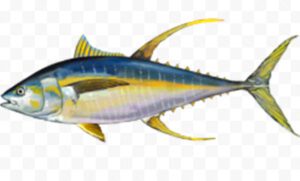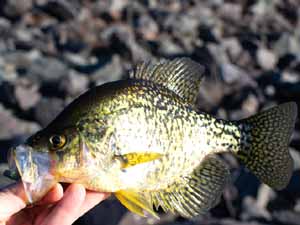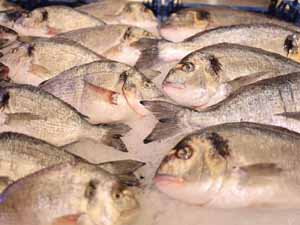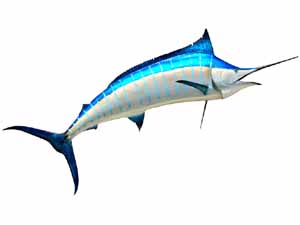The Haddock fish is a species of saltwater fish which is found in the North Atlantic Ocean and associated seas.
It is easily recognized by a black lateral line running along it’s white side, and a distinctive dark blotch above the pectoral fin. It is an important target fish species in North Atlantic fisheries.
Growth of the Haddock fish was pretty slow earlier. But the growth rates have changed significantly over the past 30-40 years.
Currently, growth is more rapid and these fish generally reach their adult size much earlier than previously noted. Read some more information about this fish species below.
Haddock Fish Characteristics
Mouth of the Haddock fish is relatively small. Their lower jaw is shorter than the upper jaw, and they lack palatine teeth.
They have 3 dorsal fins and 2 anal fins. All the fins are separate from each other. First anal fin base is short, less than one-half of preanal distance. Naturally, these fish has an off-white color.
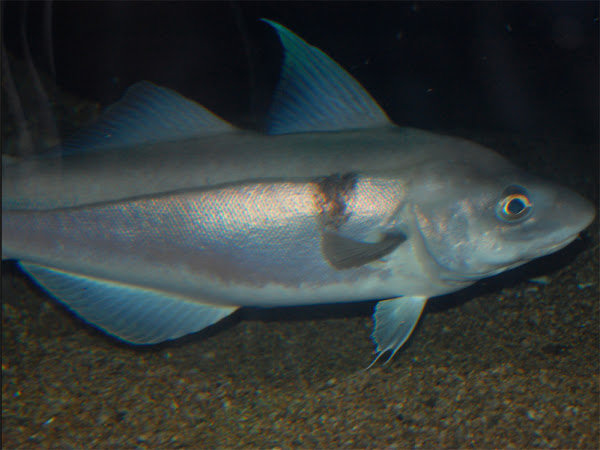
Average body length of the Haddock fish is between 38 and 69 cm, with a maximum recorded length is 1.1 m. Average body weight of the mature fish is between 0.9 and 1.8 kg. Photo and info from Wikipedia.
Diet
The Haddock fish are mainly feed on small invertebrates. Although larger members of this fish species may sometime consume fish.
Breeding
The Haddock fish reach maturity at their 4 years of age for males, and the females can take some more time for maturing. The males generally predominate on offshore grounds, and the females in shallow waters.
Spawning generally occurs in marine waters between 50 and 150 m depth. Spawning generally occurs between January and June, peaking during late March and early April.
The most important spawning grounds are in the waters off middle Norway, near southwest Iceland, and Georges Bank.
Generally a female can approximately lay around 850,000 eggs per spawning. The larger females are capable of producing up to 3 million eggs per year.
Uses
The Haddock fish is mainly used for food. It is a very popular food fish, and sold fresh, frozen, smoked, dried or canned.
Special Notes
The Haddock fish is a very important species of fish. It has great economic importance. It is one of the most popular fish in British fish and chips.
Commercial catch of this fish in North America had declined greatly in recent years, but is now recovering.
The Haddock fish is generally found at depths of 40 to 133 m, but has a range as deep as 300 m. It generally thrives in temperatures of 2-10 °C. The adults prefer deeper water, while the juveniles prefer shallower waters.
Growth rate of these fish varies considerably with regions. Body length of the fish ranges from 17-19 cm at the end of the first year. And ranges from 25 to 36 cm at the end of second year.
It is a pretty long lived fish, and average lifespan is about 14 years. However, review full breed profile of the Haddock fish in the table below.
| Name | Haddock |
| Kingdom | Animalia |
| Phylum | Chordata |
| Class | Actinopterygii |
| Order | Gadiformes |
| Family | Gadidae |
| Genus | Melanogrammus |
| Species | M. aeglefinus |
| Binomial Name | Melanogrammus aeglefinus |
| Other Names | Known by many different names in different parts of the world |
| Breed Purpose | Food |
| Special Notes | Economically important fish species, mainly used for food, commercially very important fish species, one of the most popular fish in British fish and chips, generally found at depths of 40 to 133 m, generally thrives in temperatures of 2-10 °C, adults prefer deeper water, but the juveniles prefer shallower waters, growth rate vary considerably with regions, 14 years of average lifespan, sold fresh, frozen, smoked, canned or dried |
| Breeding Method | Natural |
| Climate Tolerance | Native climates |
| Body Color | Off-white |
| Weight | 0.9-1.8 kg |
| Rarity | Common |
| Availability | America and Europe |


